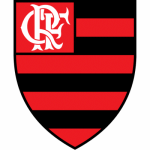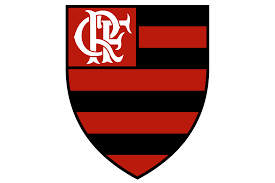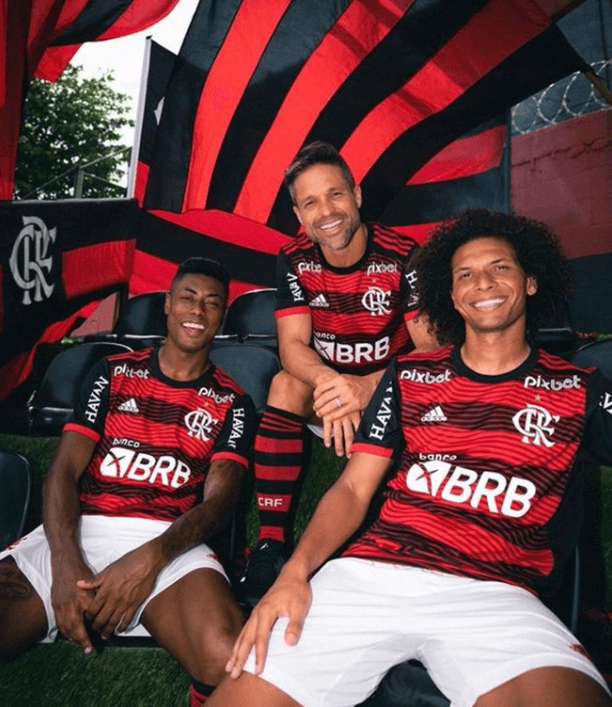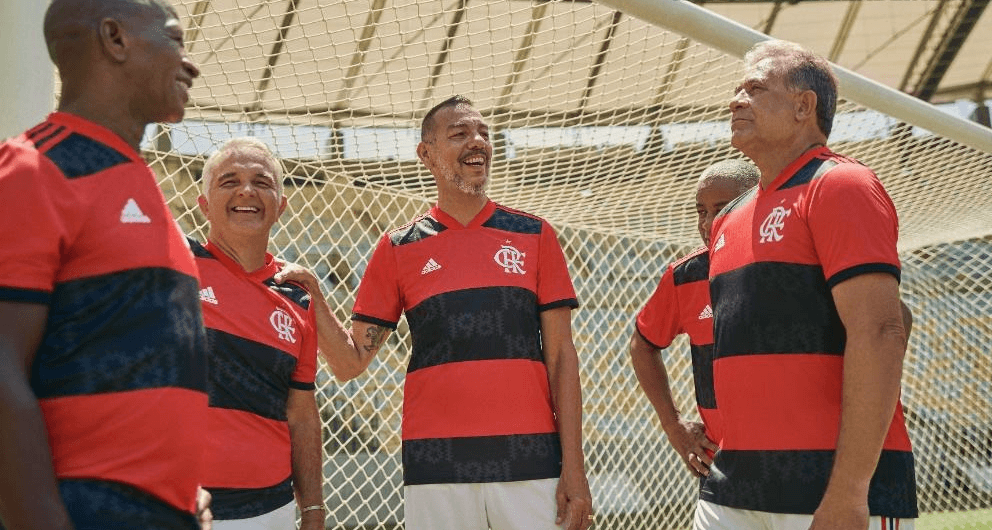- Customer Care
- Contact Us
- Shipping Info
- Wholesale Prices
- FAQs
- Worry free shopping
- Coupons & Promotions
- Payment Methods & Terms
- 365-Day Returns
- Size Guide
Download App

Download App
Clube de Regatas do Flamengo, or simply called "Flamenco" for short is a Brazilian sports club based in Rio De Janeiro. They are best known internationally because they have had success with their football team throughout different eras both before and after state leagues were introduced into Brazil which occurred during the 20th-century era when Flamingo won two consecutive titles as carioca league champion back then (1939 & 1940). The club has a rich history that dates back to 1903. They are best known for their involvement in football and sailing, but also have chapters related to judo as well! Flamengo is one of the most popular clubs in Brazil, having won 8 Campeonato Brasileiro Série A and 37 Carioca Championships and also gained recognition for their successful campaigns during 1987 UNIÃO COPA União when they became the only team ever to win both competitions back -to itself!. Flamengo is the most popular club with over 40 million fans across both countries!

Gojersey provide CR Flamengo Jerseys for sale, custom soccer replica & authentic soccer jereys.
Buy authentic soccer jerseys with the names and numbers of your favorite players, from Gabriel Barbosa Almeida, Rodinei to Willian Arao.
We customiaze soccer gear for men, women and kids. Personalize almost everything with your name, number, team logo, national flags, and more! No minium orders. Buy one of anything for yourself, or get your team added to our store for easy buying.
CR Flamengo Jersey Sale: Short Sleeve Jerseys | Long Sleeve Jerseys | Authentic Jerseys | Retro Jerseys | Soccer Shorts | Training Kits and so on.
Basic Information of CR Flamengo
ஐ Date: November 17, 1895 (126 years ago)
ஐ Country: Brazil
ஐ Stadium: Maracanã
ஐ Head Coach: Paulo Sousa
ஐ Main Trophies: Brazilian League Championship*8 | South American Super Cup Champion*1 | Copa Libertadores Champion*2 | Brazil Cup Champion*6 and so on.
CR Flamengo History
Everything at Flamengo started in 1895, six years after the proclamation of the Republic, but it wasn't football yet. When I say it, you may find it incredible, but the truth is that it all starts with rowing. It was a very popular sport at the time, played on the beaches of flamenco and Botafogo. Some friends living in the same area can create a rowing team with others so they can compete and baptize flamenco clubs. Also from that time, they have been wearing red and black uniform.
Football became popular in Rio de Janeiro in 1902. Therefore, the Flamengo club's athletes at that time often rowed in the morning and played for Fluminense Football Club in the afternoon. This practice continued for several years until 1912, probably because both sports were too physically exhausting, and possibly because of internal contradictions. Anyway, after an internal debate, some Fluminense players decided to abandon the club and create Fluminense's biggest rival, Flamengo Football Club.
Two years after the club's founding, Flamengo won its first title in the Carioca Championship.
In 1978, flamenco entered its golden age. The Flamengo team won the state championship that year, and they won many awards over the next five years. In 1980, they won the Brazilian Serie A for the first time, which qualified them for the Coppa Libertadores. 1981 was also a year to remember, as Flamengo won the Coppa Libertadores after beating Chile team Cobreroa.
Flamengo Crest
Flamengo's crest has undergone several subtle changes throughout the club's history.
ஐ Beginning in 1980, Flamengo had three white stars lined vertically on the side of their letter badge to denote their three state league treble winners (1942-43-44, 1953-54-55 and 1978 -79-79 Special).
ஐ And when Nike became Flamengo's jersey supplier in 2000, they first adopted a full shield badge with three stars on it.
ஐ After the fourth state league treble (1999-2000-2001), a fourth white and gold star was introduced above the badge to commemorate the 20th anniversary of the 1981 Copa Libertadores and Intercontinental Cup champions.
ஐ But since 2005, the club has only used the gold star above the 'CRF' monogram badge on their jerseys. Below is the current team logo.

Flamengo Stadium
Flamengo Club has a total of 4 stadiums: Rua Paysandu, Estádio da Gávea, Maracanã, Ilha do Urubu.
Estádio da Rua Paysandu ("Paysandu Street Stadium") was Flamengo's first official home ground. Before football stopped playing in 1914, the grounds belonged to the Paissandu Atlético Clube. From 1915 to 1932, they held many competitions there, which is also a treasured memory.
On September 4, 1938, the Estádio da Gávea stadium of the Flamengo club was inaugurated with a capacity of 4,000 people. Fans familiar with these histories should know that the stadium was named after José Bastos Padilha, the president of Flamengo from 1933 to 1937. Although Flamengo no longer plays in Gávea, the venue remains the club's administrative headquarters.
The Maracana Stadium was built in 1950 for the World Cup and completed in 1965. It is now mainly used as the home ground of the four major clubs in Rio de Janeiro. In 1989, the historic figure, Zico, scored his last goal at the historic stadium, setting the current Maracanã's uninterrupted scoring record of 333.
In the end, the story of this stadium and Flamengo is more ups and downs. In 2017, Flamengo played home games at Estádio Luso Brasileiro in Portugal, and Flamengo signed a three-year deal with Portugal to manage Estádio Luso Brasileiro, named Ilha do Urubu. But after several delays and administrative problems, Flamengo released its lease with Ilha do Urubu in July 2018.
Flamengo Uniforms
In fact, in the very beginning, when the Flamenco Rowing Club was established in 1895, its official colors were determined to be blue and gold, symbolizing the sky of Rio de Janeiro and the wealth of Brazil, respectively. However the Flamengo team failed to win a regatta in their first year, so the two colours are considered bad luck. A year after the club was established, the official colours were replaced by the current red and black.
In 1913, a shirt with red and black horizontal stripes and a thinner white band was produced. This is the shirt that Flamengo wore when they won their first title in 1914. In 1916, the white ribbon was removed from the shirt due to the pattern very similar to the German flag of the time. Thus, flamenco's traditional football uniform of red and black striped shirts, white shorts, and red and black socks was born.
To a certain extent, it can be said that the red and black design is the soul of the flamenco club. I remember in 2010, uniform supplier Olympikus came out with a blue and gold replacement uniform that they meant to pay homage to Flamenco's original colors and regatta uniforms, but that jersey wasn't well-received by the fans.
Below I will take you to take a look at the Flamengo jersey to appreciate this beautiful red and black design.
As you can see, this Flamengo club jersey is covered with a wave pattern. The traditional red and black stripes feature a "wave" design inspired by the red and black flags that fly inside the Maracanã during Flamengo's home games.
The sleeves are black, as is the collar. The cuffs are black and red. A special patch in the lower right corner features a flag that reads "A Maior Paixão do Mundo" (The Greatest Passion in the World) to pay homage to the fans' emotions during each home game.
Gustavo Oliveira, vice president of Communication and Marketing at the CR Flamengo commented: “In recent years, we have tried to use the great pillars of Flamengo in the creation of our official shirts – our shield, our anthem, the conquest of 1981, among others. They were the visual inspiration for shirts that were hugely successful. Now, in 2022, the inspiration was the strength, movement and spectacular look of our fans. It is what makes Flamengo the greatest passion in the world. The result was very beautiful. I have no doubt that it will be another kit that the fans will like”.

The adidas Flamengo 2021-2022 Home Shirt still features the club's classic red and black stripes, with the famous wide horizontal stripes in red and black on the front and back.
If you look closely, you'll see that this jersey is unique in its subtle design within the black stripes. Did you notice? Yes, the black areas have "1981" written on them, which is clearly the inspiration for the new design. This design celebrates the 40th anniversary of the Flamenco Intercontinental Cup, Copa Libertadores and Campenato Carioca in 1981.
There is also a unique design "ANO DO OURO" (Golden Year), printed on the back of the jersey. The phrase is also commonly used to refer to the flamenco movement of 1981.

So what happened in 1981?
In December 1981, Flamengo and Liverpool met in Tokyo as South American and European champions to compete for the Intercontinental Cup and the title of the best club team in the world.
Flamengo clinched the Carioca title a week before they met Liverpool in Tokyo. And that game against Liverpool, Flamengo won the 1981 Intercontinental Cup!
Eduardo Monsanto, Brazilian journalist, commentator and author of 1981 – O Ano Rubro-Negro, about the club’s historic year, recalls the game: “December 13th 1981 is seen by Flamengo fans as the most important day of the club’s 126 years history. Despite not having FIFA’s seal, the Intercontinental Cup is recognized in South America as a world title. The game was on TV starting Midnight, and when the Mexican referee Mario Rubio Vázquez whistled the end of the match at 2 a.m., a huge party started in Rio de Janeiro’s streets and all around Brazil, as Flamengo has supporters based all over the country. More than taking the trophy home, the way Flamengo won, crushing Liverpool with 3×0 in only 41 minutes, is revered as one of the greatest games ever played by a Brazilian team. It’s not a special game only for the supporters, but the players are also extremely proud of their achievement. They’ll meet on December 13th, 2021, to celebrate the 40 years of that outstanding performance in a dinner in Rio de Janeiro. Raul, Leandro, Marinho, Mozer and Júnior; Andrade, Adílio and Zico; Tita, Nunes and Lico. For us, ‘Rubro-Negros’ (the nickname Flamengo fans are known for), this is not a lineup. It is a prayer.”